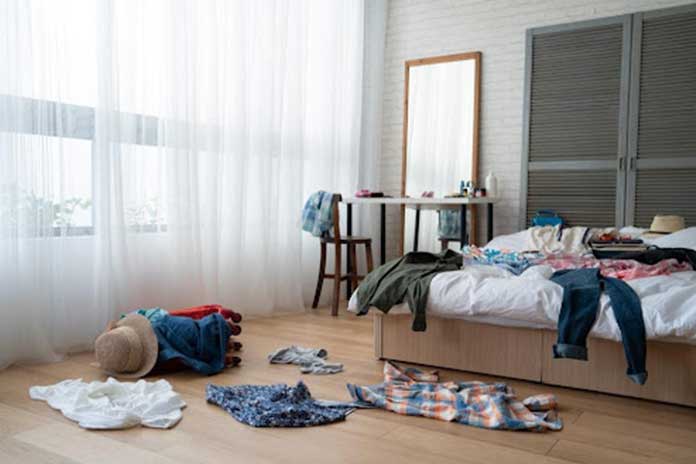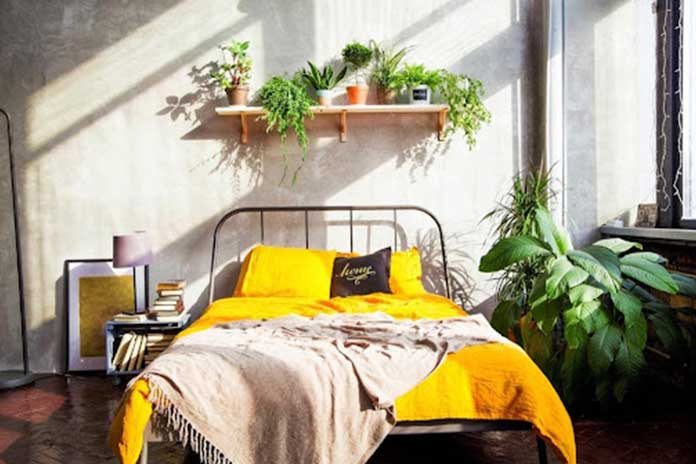It’s no secret that our environment can impact our health and well-being. For example, research has shown that people who live near the sea may be healthier than those who are landlocked and that people who live in high-crime areas tend to have higher rates of post-traumatic stress disorder and depression. But when it comes to our bedrooms, we tend to overlook the impact our design choices can have on our mental health.
From the light fixtures we buy to the artwork we hang up, how we style our bedrooms can affect our mood, behavior and hormonal balances in both direct and indirect ways. Not convinced? Read on for a few surprising (and not so surprising) ways your bedroom design can impact your mental health, for better or worse.
1. Lighting can affect your sleep and mood
If you find yourself happier on sunny days or sleeping better on days when you take an early morning stroll, that’s no coincidence. Research shows that different types of lighting can have a significant impact on our sleep and mood. For example, exposing yourself to early morning sunlight is thought to increase serotonin levels, which in turn can make you happier and help you sleep better at night. Conversely, exposure to light at bedtime has been linked to symptoms of depression.
Design It Better: To improve your sleep, mood and overall health, use blackout curtains to limit your light exposure at night and remember to open them first thing in the morning for maximum light exposure. Can’t bear to part with the decorative curtains you already have? Block out nighttime light and keep bedtime worries at bay with a soothing weighted eye mask.
Also Read: Postponed Sleep: Why We Go To Bed So Often Later Than Intended
2. Too much bedroom clutter can contribute to stress
Unlike the living room and the dining room, bedrooms are private spaces that typically don’t receive too many visitors. As a result, it can be tempting to throw our clothes on the floor and allow the tops of our dressers to become one giant catch-all tray. After all, who’s going to see it besides you?
Unfortunately, the steadily growing pile of clutter in your bedroom can be disastrous for your mental health. Clutter overwhelms our minds with excessive stimuli, causing us to lose focus and become irritable. It also tends to make us feel disorganized, which can conjure up feelings of guilt and anxiety.
Design It Better: Start by getting your bed off the ground with an inexpensive bed frame. This will free up space beneath your bed, which you can use to store seasonal clothes and other items. You can also corral clutter by installing wall shelves and making smart use of decorative baskets and trays.

3. Certain paint colors can boost your mood
Nothing refreshes a bedroom quite like a fresh coat of paint. Before you paint over your existing wall color, though, you may want to take color psychology into consideration. Defined as the study of how certain colors influence human behavior, color psychology has become a hot topic of debate within the scientific community. Although perceptions of color may vary, some colors appear to evoke universal feelings. For example, warm colors (red, orange and yellow) tend to conjure passionate feelings ranging from warmth and happiness to hostility and anger, while cool colors (green, blue and purple) often evoke feelings of calm and seriousness.
Design It Better: Since the bedroom is supposed to be a place of rest and relaxation, most interior designers and color psychologists recommend painting your sleeping quarters in calming shades, such as blue, green and soft gray. But again, color is subjective. If the color pink makes you feel happy and calm, by all means — paint your bedroom pink!
4. Bedding can make or break your comfort at night
You’ve finally found a stylish comforter that matches perfectly with your décor. The only problem? It’s made from polyester, and you’re a hot sleeper. Should you buy it anyway and risk the night sweats?
Many interior design enthusiasts have found themselves in this tricky situation before. Although it’s tempting to buy bedding based on design alone, doing so can hinder your sleep, which in turn negatively impacts your mental health.
Design It Better: For a better night’s sleep, look for bedding that tackles your biggest sleep problems in style. For example, if you have trouble sleeping, cuddle up with a stylish yet soothing weighted blanket that makes you feel like you’re being hugged all night. Are you a hot sleeper? Opt for a set of cooling sheets that wick away sweat while you sleep.
5. Plants and flowers can make you happier
Interior designers love to incorporate plants, flowers and other natural elements into their client’s homes, and it’s not hard to see why. In addition to giving our living spaces more dimension and color, plants and flowers are scientifically proven to reduce stress and improve well-being. Air-purifying plants are a great choice for the bedroom in particular, thanks to their ability to improve indoor air quality while you’re sleeping.
Design It Better: Before you head to the closest nursery, spend some time researching which plants will be a good fit for the bedroom. Not all plants are the same, which means they won’t all thrive in the same location. To create a serene sanctuary, determine what kind of light you have in your bedroom and how much light your ideal houseplant will need. (When in doubt, you can’t go wrong with a low-maintenance snake plant!)

Designing Your Way to Better Mental Health
Psychotherapy and counseling are considered the gold standard for treating mental health problems, but they aren’t the only ways to practice self-care and give your mental health a boost. With these bedroom design tips, you can design your way to better mental health and get your new year started on the right foot!
Also Read: How Confinement Affects mental health during COVID pandemic
